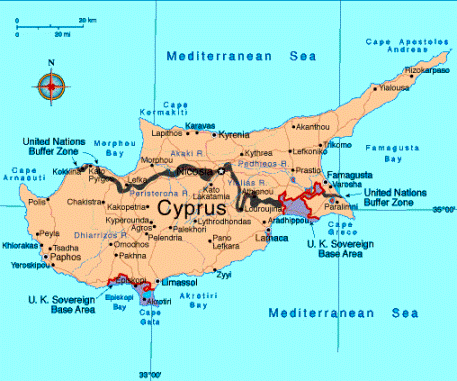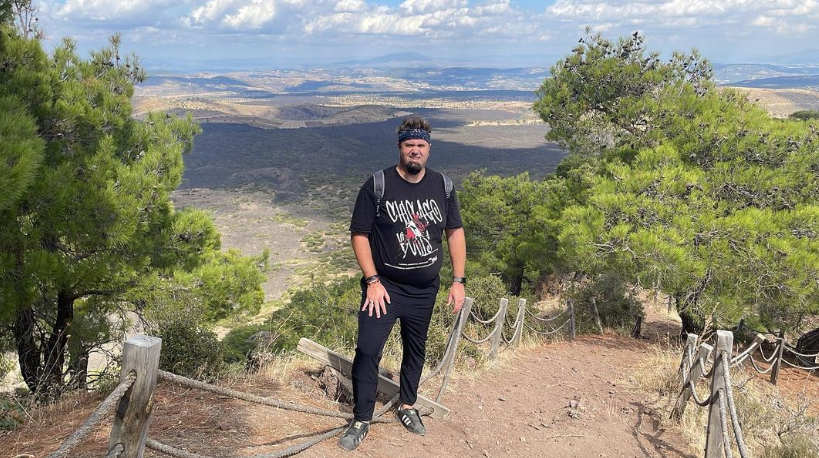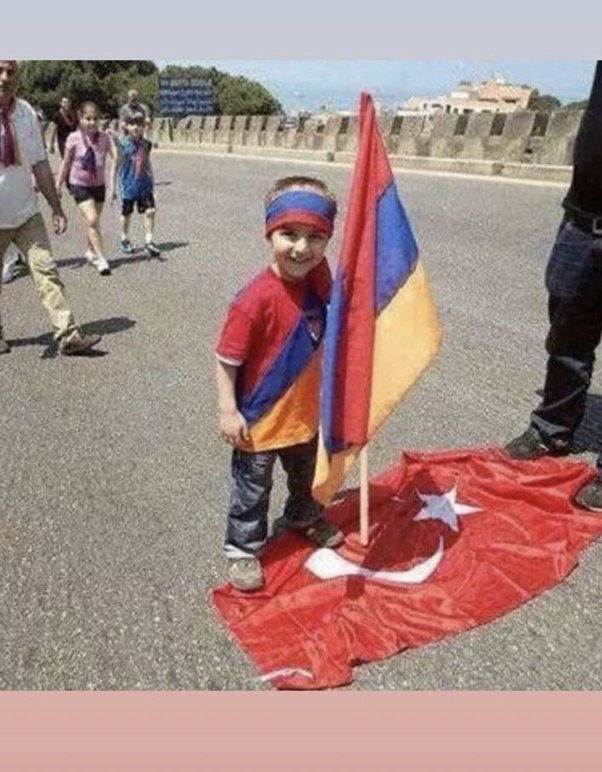By George Friedman
On Sept. 11, 1990, U.S. President George H. W. Bush addressed Congress. He spoke in the wake of the end of Communism in Eastern Europe, the weakening of the Soviet Union, and the invasion of Kuwait by Saddam Hussein. He argued that a New World Order was emerging: “A hundred generations have searched for this elusive path to peace, while a thousand wars raged across the span of human endeavor, and today that new world is struggling to be born. A world quite different from the one we’ve known. A world where the rule of law supplants the rule of the jungle. A world in which nations recognize the shared responsibility for freedom and justice. A world where the strong respect the rights of the weak.”
After every major, systemic war, there is the hope that this will be the war to end all wars. The idea driving it is simple. Wars are usually won by grand coalitions. The idea is that the coalition that won the war by working together will continue to work together to make the peace. Indeed, the idea is that the defeated will join the coalition and work with them to ensure the peace. This was the dream behind the Congress of Vienna, the League of Nations, the United Nations and, after the Cold War, NATO. The idea was that there would be no major issues that couldn’t be handled by the victors, now joined with the defeated. That was the idea that drove George H. W. Bush as the Cold War was coming to its end.
Those with the dream are always disappointed. The victorious coalition breaks apart. The defeated refuse to play the role assigned to them. New powers emerge that were not part of the coalition. Anyone may have ideals and visions. The reality of the world order is that there are profound divergences of interest in a world where distrust is a natural and reasonable response to reality. In the end, ideals and visions vanish in a new round of geopolitical conflict.
The post-Cold War world, the New World Order, ended with authority on Aug. 8, 2008, when Russia and Georgia went to war. Certainly, this war was not in itself of major significance, and a very good case can be made that the New World Order actually started coming apart on Sept. 11, 2001. But it was on Aug. 8 that a nation-state, Russia, attacked another nation-state, Georgia, out of fear of the intentions of a third nation-state, the United States. This causes us to begin thinking about the Real World Order.
The global system is suffering from two imbalances. First, one nation-state, the United States, remains overwhelmingly powerful, and no combination of powers are in a position to control its behavior. We are aware of all the economic problems besetting the United States, but the reality is that the American economy is larger than the next three economies combined (Japan, Germany and China). The U.S. military controls all the world’s oceans and effectively dominates space. Because of these factors, the United States remains politically powerful – not liked and perhaps not admired, but enormously powerful.
The second imbalance is within the United States itself. Its ground forces and the bulk of its logistical capability are committed to the Middle East, particularly Iraq and Afghanistan. The United States also is threatening on occasion to go to war with Iran, which would tie down most of its air power, and it is facing a destabilizing Pakistan. Therefore, there is this paradox: The United States is so powerful that, in the long run, it has created an imbalance in the global system. In the short run, however, it is so off balance that it has few, if any, military resources to deal with challenges elsewhere. That means that the United States remains the dominant power in the long run but it cannot exercise that power in the short run. This creates a window of opportunity for other countries to act.
The outcome of the Iraq war can be seen emerging. The United States has succeeded in creating the foundations for a political settlement among the main Iraqi factions that will create a relatively stable government. In that sense, U.S. policy has succeeded. But the problem the United States has is the length of time it took to achieve this success. Had it occurred in 2003, the United States would not suffer its current imbalance. But this is 2008, more than five years after the invasion. The United States never expected a war of this duration, nor did it plan for it. In order to fight the war, it had to inject a major portion of its ground fighting capability into it. The length of the war was the problem. U.S. ground forces are either in Iraq, recovering from a tour or preparing for a deployment. What strategic reserves are available are tasked into Afghanistan. Little is left over.
As Iraq pulled in the bulk of available forces, the United States did not shift its foreign policy elsewhere. For example, it remained committed to the expansion of democracy in the former Soviet Union and the expansion of NATO, to include Ukraine and Georgia. From the fall of the former Soviet Union, the United States saw itself as having a dominant role in reshaping post-Soviet social and political orders, including influencing the emergence of democratic institutions and free markets. The United States saw this almost in the same light as it saw the democratization of Germany and Japan after World War II. Having defeated the Soviet Union, it now fell to the United States to reshape the societies of the successor states.
Through the 1990s, the successor states, particularly Russia, were inert. Undergoing painful internal upheaval – which foreigners saw as reform but which many Russians viewed as a foreign-inspired national catastrophe – Russia could not resist American and European involvement in regional and internal affairs. From the American point of view, the reshaping of the region – from the Kosovo war to the expansion of NATO to the deployment of U.S. Air Force bases to Central Asia – was simply a logical expansion of the collapse of the Soviet Union. It was a benign attempt to stabilize the region, enhance its prosperity and security and integrate it into the global system.
As Russia regained its balance from the chaos of the 1990s, it began to see the American and European presence in a less benign light. It was not clear to the Russians that the United States was trying to stabilize the region. Rather, it appeared to the Russians that the United States was trying to take advantage of Russian weakness to impose a new politico-military reality in which Russia was to be surrounded with nations controlled by the United States and its military system, NATO. In spite of the promise made by Bill Clinton that NATO would not expand into the former Soviet Union, the three Baltic states were admitted. The promise was not addressed. NATO was expanded because it could and Russia could do nothing about it.
From the Russian point of view, the strategic break point was Ukraine. When the Orange Revolution came to Ukraine, the American and European impression was that this was a spontaneous democratic rising. The Russian perception was that it was a well-financed CIA operation to foment an anti-Russian and pro-American uprising in Ukraine. When the United States quickly began discussing the inclusion of Ukraine in NATO, the Russians came to the conclusion that the United States intended to surround and crush the Russian Federation. In their view, if NATO expanded into Ukraine, the Western military alliance would place Russia in a strategically untenable position. Russia would be indefensible. The American response was that it had no intention of threatening Russia. The Russian question was returned: Then why are you trying to take control of Ukraine? What other purpose would you have? The United States dismissed these Russian concerns as absurd. The Russians, not regarding them as absurd at all, began planning on the assumption of a hostile United States.
If the United States had intended to break the Russian Federation once and for all, the time for that was in the 1990s, before Yeltsin was replaced by Putin and before 9/11. There was, however, no clear policy on this, because the United States felt it had all the time in the world. Superficially this was true, but only superficially. First, the United States did not understand that the Yeltsin years were a temporary aberration and that a new government intending to stabilize Russia was inevitable. If not Putin, it would have been someone else. Second, the United States did not appreciate that it did not control the international agenda. Sept. 11, 2001, took away American options in the former Soviet Union. No only did it need Russian help in Afghanistan, but it was going to spend the next decade tied up in the Middle East. The United States had lost its room for maneuver and therefore had run out of time.
And now we come to the key point. In spite of diminishing military options outside of the Middle East, the United States did not modify its policy in the former Soviet Union. It continued to aggressively attempt to influence countries in the region, and it became particularly committed to integrating Ukraine and Georgia into NATO, in spite of the fact that both were of overwhelming strategic interest to the Russians. Ukraine dominated Russia’s southwestern flank, without any natural boundaries protecting them. Georgia was seen as a constant irritant in Chechnya as well as a barrier to Russian interests in the Caucasus.
Moving rapidly to consolidate U.S. control over these and other countries in the former Soviet Union made strategic sense. Russia was weak, divided and poorly governed. It could make no response. Continuing this policy in the 2000s, when the Russians were getting stronger, more united and better governed and while U.S. forces were no longer available, made much less sense. The United States continued to irritate the Russians without having, in the short run, the forces needed to act decisively.
The American calculation was that the Russian government would not confront American interests in the region. The Russian calculation was that it could not wait to confront these interests because the United States was concluding the Iraq war and would return to its pre-eminent position in a few short years. Therefore, it made no sense for Russia to wait and it made every sense for Russia to act as quickly as possible.
The Russians were partly influenced in their timing by the success of the American surge in Iraq. If the United States continued its policy and had force to back it up, the Russians would lose their window of opportunity. Moreover, the Russians had an additional lever for use on the Americans: Iran.
The United States had been playing a complex game with Iran for years, threatening to attack while trying to negotiate. The Americans needed the Russians. Sanctions against Iran would have no meaning if the Russians did not participate, and the United States did not want Russia selling advance air defense systems to Iran. (Such systems, which American analysts had warned were quite capable, were not present in Syria on Sept. 6, 2007, when the Israelis struck a nuclear facility there.) As the United States re-evaluates the Russian military, it does not want to be surprised by Russian technology. Therefore, the more aggressive the United States becomes toward Russia, the greater the difficulties it will have in Iran. This further encouraged the Russians to act sooner rather than later.
The Russians have now proven two things. First, contrary to the reality of the 1990s, they can execute a competent military operation. Second, contrary to regional perception, the United States cannot intervene. The Russian message was directed against Ukraine most of all, but the Baltics, Central Asia and Belarus are all listening. The Russians will not act precipitously. They expect all of these countries to adjust their foreign policies away from the United States and toward Russia. They are looking to see if the lesson is absorbed. At first, there will be mighty speeches and resistance. But the reality on the ground is the reality on the ground.
We would expect the Russians to get traction. But if they don’t, the Russians are aware that they are, in the long run, much weaker than the Americans, and that they will retain their regional position of strength only while the United States is off balance in Iraq. If the lesson isn’t absorbed, the Russians are capable of more direct action, and they will not let this chance slip away. This is their chance to redefine their sphere of influence. They will not get another.
The other country that is watching and thinking is Iran. Iran had accepted the idea that it had lost the chance to dominate Iraq. It had also accepted the idea that it would have to bargain away its nuclear capability or lose it. The Iranians are now wondering if this is still true and are undoubtedly pinging the Russians about the situation. Meanwhile, the Russians are waiting for the Americans to calm down and get serious. If the Americans plan to take meaningful action against them, they will respond in Iran. But the Americans have no meaningful actions they can take; they need to get out of Iraq and they need help against Iran. The quid pro quo here is obvious. The United States acquiesces to Russian actions (which it can’t do anything about), while the Russians cooperate with the Unit ed States against Iran getting nuclear weapons (something Russia does not want to see).
One of the interesting concepts of the New World Order was that all serious countries would want to participate in it and that the only threat would come from rogue states and nonstate actors such as North Korea and al Qaeda. Serious analysts argued that conflict between nation-states would not be important in the 21st century. There will certainly be rogue states and nonstate actors, but the 21st century will be no different than any other century. On Aug. 8, the Russians invited us all to the Real World Order.
Tell Stratfor What You Think
This report may be forwarded or republished on your website with attribution to www.stratfor.com



